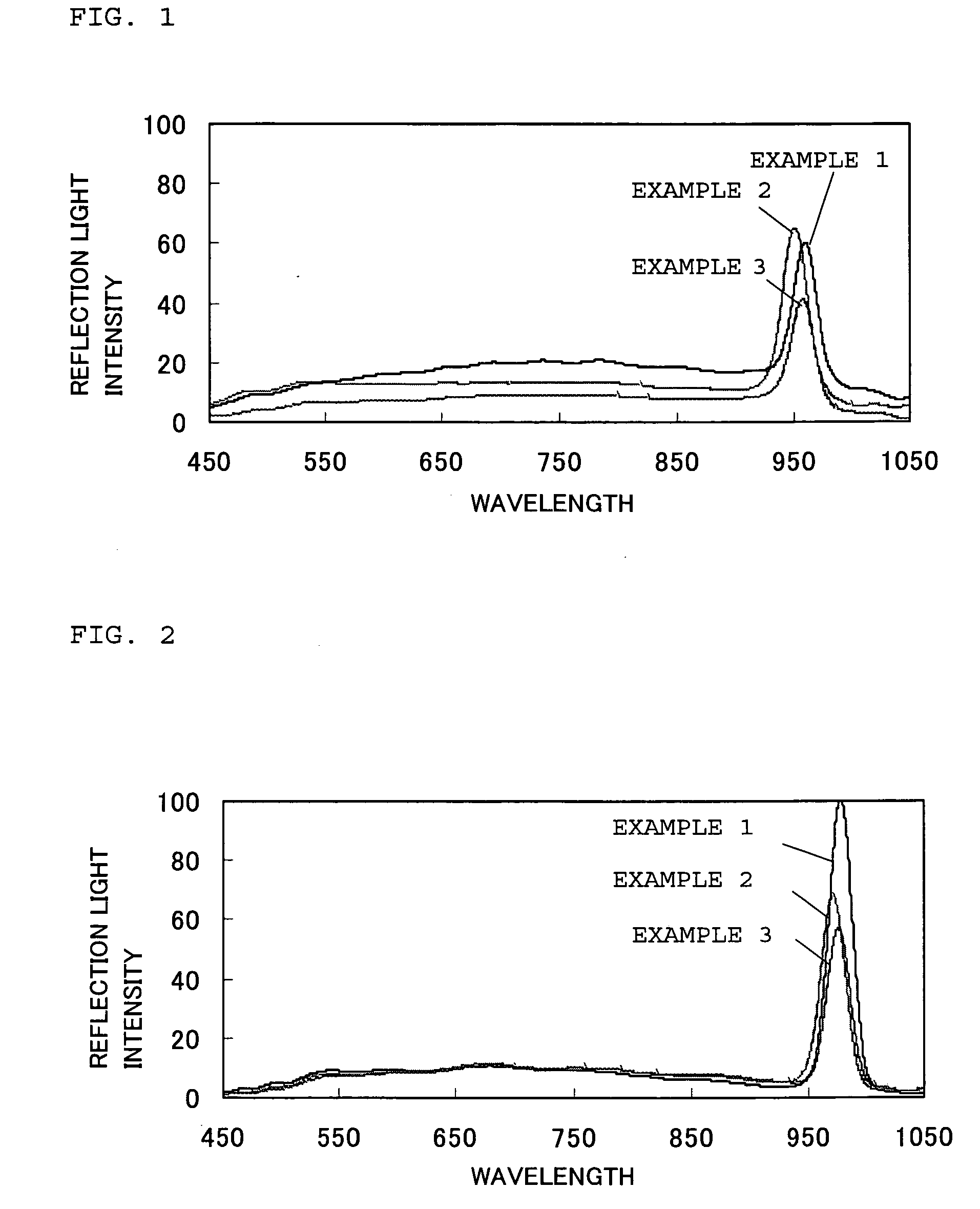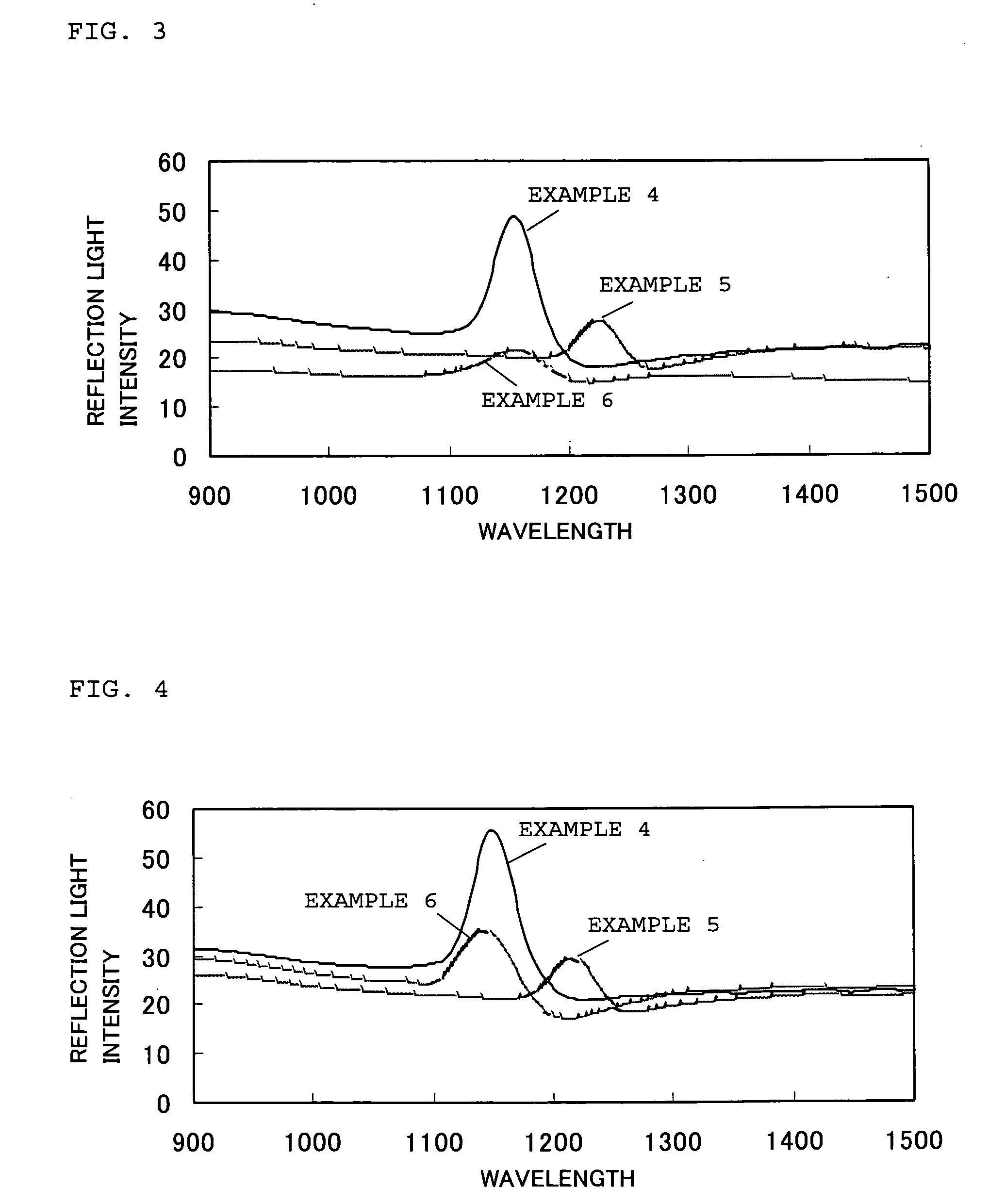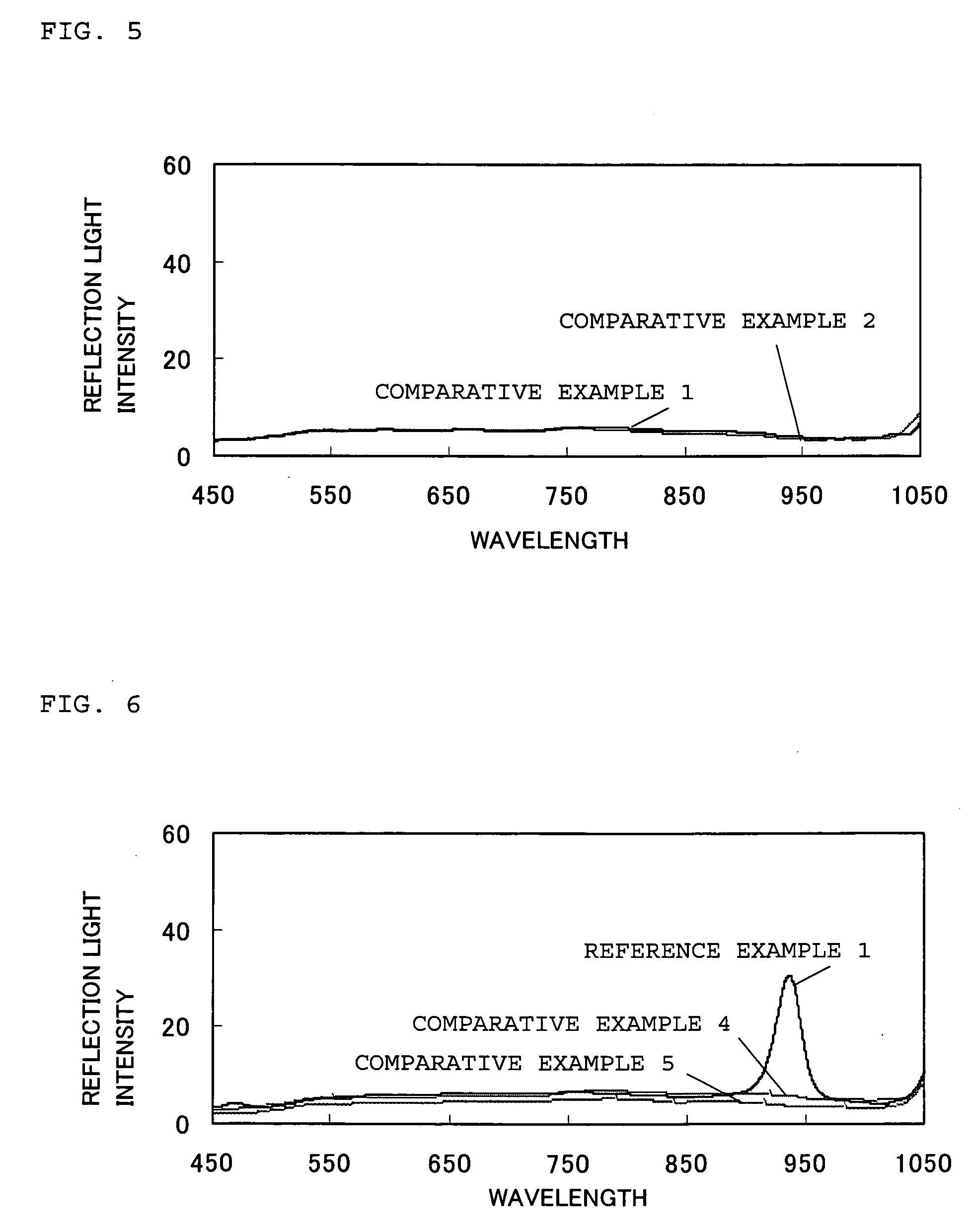Process for producing colloidal crystals immobilized with a polymer and colloidal crystals immobilized with a polymer
a technology of colloidal crystals and polymers, which is applied in the direction of crystal growth process, polycrystalline material growth, chemistry apparatus and processes, etc., can solve the problems of colloidal crystal destruction, inability to control, and difficult control of the structure of colloidal crystals, etc., to achieve high application value, low degree of monodispersity, and easy immobilization
- Summary
- Abstract
- Description
- Claims
- Application Information
AI Technical Summary
Benefits of technology
Problems solved by technology
Method used
Image
Examples
example 1
[0060]First, silica particles (“Seahoster KEP30” manufactured by Nippon Shokubai Co., Ltd.; SiO2; particle size 280 nm; degree of monodispersity 10%) were added to polyethylene glycol diacrylate monomers (“NK ESTER A200” manufactured by Shin-Nakamura Chemical Co., Ltd; viscosity 25 mPa·s) to obtain a mixture containing the silica particles of 25 vol %. Then, ultrasound (40 kHz) was applied to the mixture at room temperature (25° C.) for 3 hours to disperse the silica particles so as to arrange the silica particles in a three-dimensionally ordered array state at which the reflection spectrum thereof exhibits a reflection peak. As a result, a monomer-dispersion containing colloidal particles (silica particles) uniformly dispersing in the monomers was obtained.
[0061]Next, the monomer-dispersion was mixed with a light curing agent of b 2 mass % (“Darocure 1173” manufactured by Ciba Specialty Chemicals K. K.), and then injected into a glass cell (size: 100 mm long, 100 mm wide, and 0.5 m...
example 2
[0062]First, silica particles (“Seahoster KEP30” manufactured by Nippon Shokubai Co., Ltd.; SiO2; particle size 280 nm; degree of monodispersity 10%) were added to polyethylene glycol acrylate monomers (“NK ESTER AM90G” manufactured by Shin-Nakamura Chemical Corporation; viscosity 25 mPa·s) to obtain a mixture containing the silica particles of 25 vol %. Then, ultrasound (40 kHz) was applied to the mixture at room temperature (25° C.) for 3 hours to disperse the silica particles so as to arrange the silica particles in a three-dimensionally ordered array state at which the reflection spectrum thereof exhibits a reflection peak. As a result, a monomer-dispersion containing colloidal particles (silica particles) uniformly dispersing in the monomers was obtained.
[0063]Next, the monomer-dispersion was mixed with a light curing agent of 2 mass % (“Darocure 1173” manufactured by Ciba Specialty Chemicals K. K.), and then injected into a glass cell (size: 100 mm long, 100 mm wide, and 0.5 m...
example 3
[0064]After ethanol was added to polypropylene glycol triacrylate monomers (“NK ESTER APG700” manufactured by Shin-Nakamura Chemical Corporation) to obtain a mixture having a viscosity of 40 mPa·s, silica particles (“Seahoster KEP30” manufactured by Nippon Shokubai Co., Ltd.; SiO2; particle size 280 nm; degree of monodispersity 10%) were added to obtain a mixture containing the silica particles of 25 vol %. Then, ultrasound (40 kHz) was applied to the mixture at room temperature (25° C.) for 3 hours to disperse the silica particles so as to arrange the silica particles in a three-dimensionally ordered array state at which the reflection spectrum thereof exhibits a reflection peak. As a result, a monomer-dispersion containing colloidal particles (silica particles) uniformly dispersing in the monomers was obtained. It should be noted that, in this monomer-dispersion, the content of the ethanol was 10 mass parts to 100 mass parts of a total amount of the monomers and silica particles.
[...
PUM
| Property | Measurement | Unit |
|---|---|---|
| particle size | aaaaa | aaaaa |
| viscosity | aaaaa | aaaaa |
| particle size | aaaaa | aaaaa |
Abstract
Description
Claims
Application Information
 Login to View More
Login to View More - R&D
- Intellectual Property
- Life Sciences
- Materials
- Tech Scout
- Unparalleled Data Quality
- Higher Quality Content
- 60% Fewer Hallucinations
Browse by: Latest US Patents, China's latest patents, Technical Efficacy Thesaurus, Application Domain, Technology Topic, Popular Technical Reports.
© 2025 PatSnap. All rights reserved.Legal|Privacy policy|Modern Slavery Act Transparency Statement|Sitemap|About US| Contact US: help@patsnap.com



